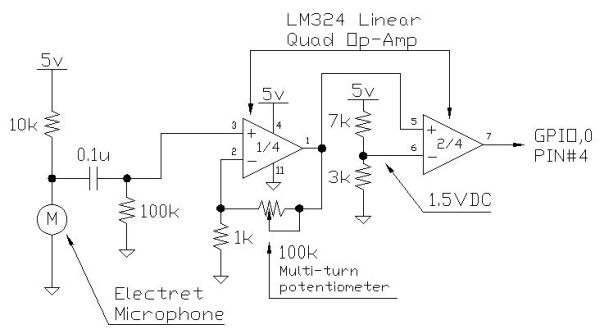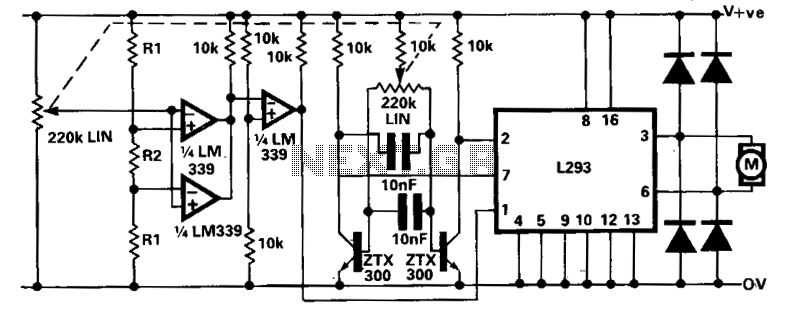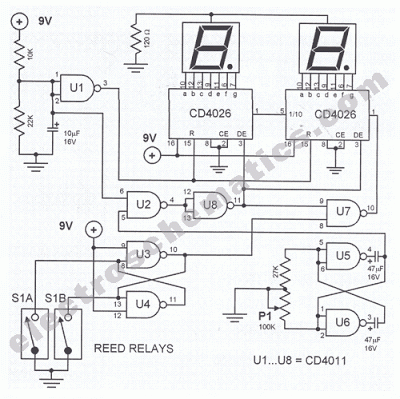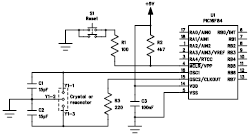
clap on/off switch circuit using pic10f222

Instructions for creating a Clap-Clap On/Clap-Clap Off switch circuit. This guide provides the necessary information for constructing a clap-activated switch.
The Clap-Clap switch circuit is an innovative design that utilizes sound activation to control electronic devices. The primary components of this circuit typically include a microphone, an operational amplifier (op-amp), a microcontroller, and a relay or transistor to switch the load.
The microphone captures sound waves, specifically claps, and converts them into an electrical signal. This signal is then amplified using the op-amp, which enhances the signal strength to make it more suitable for processing. The amplified signal is fed into a microcontroller programmed to recognize the specific pattern of two consecutive claps.
Once the microcontroller detects the clap pattern, it sends a signal to activate a relay or transistor, which in turn switches the connected load on or off. The relay acts as an electronic switch, allowing for the control of higher voltage devices while keeping the low voltage components of the circuit safe.
To ensure proper functionality, it is essential to calibrate the microphone sensitivity and the timing within the microcontroller to accurately detect the clap sound without false triggers from background noise. Power supply considerations must also be made, ensuring that the circuit operates within the voltage and current ratings of the components used.
This Clap-Clap switch circuit is suitable for various applications, including home automation systems, where users can control lights or appliances simply by clapping, offering a convenient hands-free operation.How to make a Clap-Clap on / Clap-Clap Off switch circuit! Hi all! This instructable not only gives the reader the information needed to create a clap-clap.. 🔗 External reference
The Clap-Clap switch circuit is an innovative design that utilizes sound activation to control electronic devices. The primary components of this circuit typically include a microphone, an operational amplifier (op-amp), a microcontroller, and a relay or transistor to switch the load.
The microphone captures sound waves, specifically claps, and converts them into an electrical signal. This signal is then amplified using the op-amp, which enhances the signal strength to make it more suitable for processing. The amplified signal is fed into a microcontroller programmed to recognize the specific pattern of two consecutive claps.
Once the microcontroller detects the clap pattern, it sends a signal to activate a relay or transistor, which in turn switches the connected load on or off. The relay acts as an electronic switch, allowing for the control of higher voltage devices while keeping the low voltage components of the circuit safe.
To ensure proper functionality, it is essential to calibrate the microphone sensitivity and the timing within the microcontroller to accurately detect the clap sound without false triggers from background noise. Power supply considerations must also be made, ensuring that the circuit operates within the voltage and current ratings of the components used.
This Clap-Clap switch circuit is suitable for various applications, including home automation systems, where users can control lights or appliances simply by clapping, offering a convenient hands-free operation.How to make a Clap-Clap on / Clap-Clap Off switch circuit! Hi all! This instructable not only gives the reader the information needed to create a clap-clap.. 🔗 External reference





